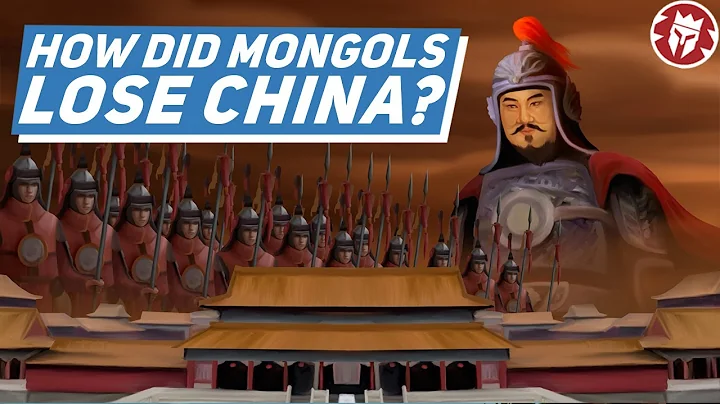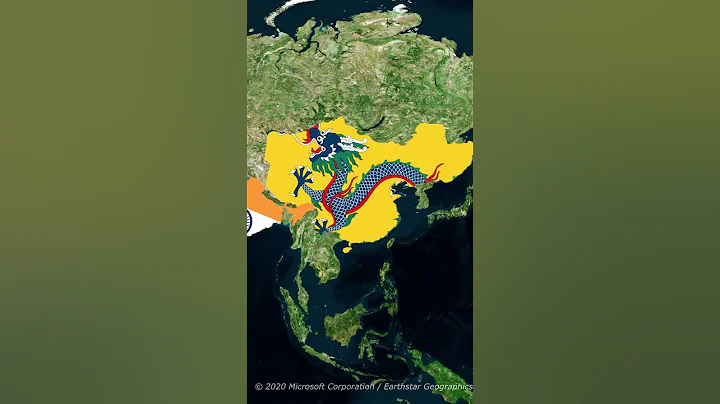There are not many towns in Jiangyang District. The reason is that many of them have become streets, and there have been adjustments and changes. For example, Shipeng Town disappeared and became Fangshan Town , and then Kuangchang, Lantian, Qiancao, Tai'an, etc. became street. So it seems that there are not many towns. Today I will give you a brief introduction based on the current towns. Others such as Qiancao, Zhangba, Lantian, etc. need to be published separately. I hope everyone will continue to pay attention.
Huangshen Town

is in the east of Jiangyang District, Luzhou City, Sichuan Province. Area is 58 square kilometers. Population 37,000. The town people's government is located in Huangshen Street, with a population of 300. A water post was set up in the Ming Dynasty, and there were many boats and boats. There was a lot of yellow mud on the ground, so it was named Huangsi Post. In 1950, Huangshan Township was established. It was converted into a commune in 1958 and restored to a rural area in 1984. In 1992, Zhongxing Township was incorporated. The town was established in 2000. Rich in citrus, cocoons, sugar cane, etc. There are sand and gravel, agricultural machinery and other enterprises. The Municipal Horticulture Research Institute and original seed farm are located in the town. There are power stations and hospitals. Lu (Zhou) He (Jiang) Highway passes here.
talked about Huang Si (yǐ), but people here in Luzhou are used to reading "Huang Mi", "Huang Mi", do you know why? Everyone knows that today it is famous for its wine park, Zhongxing Ancient Market, Wayao Beach, etc., including the Buddhist temple and the story of Emperor Jianwen. It is worth writing about it separately. Today I will only give an introduction, and a special appendix will be recorded later.

Miduo Town
Luzhou City Miduo Town, Jiangyang District, is located in the east of Luzhou, Sichuan Province, more than half an hour's drive from Luzhou City. The Yangtze River flows around the north and flows into Hejiang . It faces Shenji City (commonly known as "Old Luzhou") across the river, borders Hejiang County Bridge and Foyin Town in the east, and borders Huangshen Town in Jiangyang District in the west and south. , adjacent to Fenshuiling Town.
This place is also one of the ancient towns in Luzhou. There used to be a Baihua Temple, but it was later rebuilt and renamed Amitabha Temple. I don’t know if it is still there. I am not very impressed by Amitabha, but I think it is very simple, and its origins , I feel that I am always connected with Buddha.
The most profound impression I have on Amitabha now is what I consider to be the Three Treasures of Amitabha: White Horse Chicken Soup, Fresh River Fish and Wind Ice Cream.

There are several White Horse Chicken Soup restaurants in Luzhou city. It’s hard to say whether they are authentic or not. Locals say it’s best to eat locally. Maybe the local food is really delicious. I haven’t had time to go there. The fresh river food is hard to come by, and to protect water quality and the environment, it’s better not to fish indiscriminately. As for the ice cream, it still has some historical origins.
The most famous places in Miduo Town are Shui Shui Dam and Divine Arm City, so I can only give you a reminder here, and I will write a special article in the future.
Tongtan Town
Tongtan Town is located in the western suburbs of Jiangyang District, adjacent to the Tuojiang River, 20 kilometers away from the urban area. It borders Zigong City to the northwest, Yibin City to the southwest, and across the river to the north. Lu County faces each other and is the "West Gate" of Luzhou. It is the largest town in Jiangyang District and is also said to be the largest town in Tuojiang. Tongtan town was established in 1934, converted into a commune in 1958, into a township in 1984, and restored to a town in 1992. In 1996, it was transferred from Lu County to Jiangyang District. Located in the western part of the district.
There is Laojiao's sorghum base in Tongtan, which is indispensable for wine making. There is also a vegetable base. This should be a relatively good place for Luzhou's agriculture. Moreover, it is very close to the urban area. There are Luzi Road (Luzhou to Zigong) and Tongyi Road (Tongtan to Yibin) running through the entire territory, and the transportation is very developed. It is located in the western suburbs of Jiangyang District, adjacent to the Tuojiang River, 20 kilometers away from the urban area, bordering Zigong City in the northwest, Yibin City in the southwest, and facing Lu County across the river in the north. It is the "West Gate" of Luzhou.

Jiangbei Town
This place was formerly called Dabei Township. It used to belong to Naxi , so friends in Naxi still feel that they should bring it with them when introducing Naxi, but it has been divided. According to today’s rules, why is it called Dabei? The township has not found the reason, but it is good to know. According to data, Dabei Township was established in 1953, restructured into Jiangbei Commune in 1975, and established as a town in 1985. In 1996, it was transferred from Naxi County to Jiangyang District.
The sugar cane in Jiangbei should produce sugar, including brown sugar, but I don’t think it has a scale or a brand, and there are also many vegetables.
There is also a power plant in Jiangbei. The situation today is unclear and I don’t know if it is still in use.

Fangshan Town
Fangshan Town is located in the southwest of Jiangyang District, 15 kilometers away from the city. It is a pilot town for provincial small town construction. It has jurisdiction over 1 community and 12 administrative villages. Lu (zhou) Yi (Bin) Highway passes through, and there is a four (kilometre) stone (shed) highway leading to Fangshan, a tourist area. There are provincial forest park Fangshan, Yunfeng Temple, a Buddhist holy site in southern Sichuan, and the Eastern Han Dynasty tomb ruins. The town party committee, town government, and town people's congress are stationed in Fangshan Community.
Baofeng Township was established in 1957, changed to Shipeng Commune in 1960, Shipeng Township was established in 1984, and a town was established in 1992. In 1996, it was transferred from Naxi County to Jiangyang District. It is located in the southwest of the district, 20 kilometers away from the municipal government.
Shan Town was renamed from Shipeng Town in 2001, but to be honest we prefer to talk about Shipeng, because the memories of old Luzhou people are different. There are many historical allusions to the stone shed, and there are also many cultural relics and historic sites in Fangshan. It is impossible to describe this place in a few sentences, so I will omit it here and write it down later.

Danlin Town
Danlin Town, Jiangyang District, Luzhou City, was rebuilt from Danlin Township. In 2013, Danlin Township was abolished and Danlin Town was established. Danlin Farm, where the town People's Government, the Town Party Committee, and the Town People's Congress are stationed, has jurisdiction over the administrative area of the original Danlin Township. But my impression seems to be that it used to be called Maling. It is said that it was changed in order not to duplicate the place name of Xuyong or Gulin.
Danlin’s main influence is on pear blossoms, and I have never visited them once. There are many places to see pear blossoms in Luzhou, so I’ll go and see them if I get the chance.
Fenshuiling Town
There is Fenshuiling Town in Luzhou, which is now well-known for its oil-paper umbrellas and Dongyunba vegetable base. Fenshui Town in Luzhou has a long history and is located on the southern edge of Jiangyang District, 19 kilometers away from the district government. It is Jiangyang District, Naxi District and the junction of the three districts and counties of Hejiang County, Luyu Expressway , Chengzi-Luchi Expressway, Tai 2nd Road and Mifen Road pass through it, about half an hour's drive from the city. ,Transportation is very convenient. Because Xuyong County also has Fenshui Town, so don’t get confused.
The current Fenshui Town was formerly called Fenshuilingchang. It is located on the Yumailing Ridge in the transition zone between the Sichuan Basin and the Yunnan-Guizhou Plateau on the south bank of the Luzhou Yangtze River. It used to be under the jurisdiction of Chongyi Township, one of the top ten townships in Lu County. It is the link between Luzhou and Yunnan. It is a necessary place for transporting salt, tea, tung oil, paper umbrellas and other local specialties between Guizhou and Guizhou. It is also a post station on the Yanma Ancient Road.

It is said that the watershed field emerged in the Ming Dynasty and has a history of at least 500 years.
According to the records of Lu County, the watershed was originally built as a passing shop with three thatched houses. The original name was "Jinjilin" (the three characters "Jinjilin" were engraved on the stone wall of "Youfangwan" under the intersection of the original waterwheel dam. In 1964, due to the expansion of the stone granary by the Water Diversion and Grain Pipeline, a large amount of stone was quarried there and it was completely destroyed). There is also a legend about the origin of
. There is a field and a forest at the head of the watershed. There is a bird called "Golden Rooster" living in the forest all year round. It lives in harmony with humans. The business of roadside shops is also very prosperous. . One day, a nearby hunter came to the woods and shot a "golden rooster". The "golden rooster" flew away and never came back.
The shop owner's business also declined from then on, until an unknown fire in three thatched huts destroyed all of them. Several shop owners believed that their business depression and the fire were caused by the hunter hitting the "golden rooster", an auspicious thing. After discussion, local officials decided to impose penalties on hunting: with the field as the boundary, hunters were not allowed to cross the field, and the "Golden Rooster Forest" was renamed the "Watershed".

On the other hand, due to the special geographical location of the above-mentioned field at the head of the watershed, the water from the field flows out from gaps in three different directions and flows into three large rivers, which are far apart.
That is, it flows out from the north gap through "Wenxing Bridge" Tai'an to "Yuzixi River" and enters the "Yangtze River"; from the west gap it flows out through "Duiliu River" and passes through Longche Town from Naxi into " Yongning River "; From the south gap, "Helong Creek" flows through Yaoba Town and Xianshi Town into "Chishui River"; to the east is the upper entrance of the watershed. Therefore, the name of watershed is said to be
. Due to its special geographical location, watershed ancient town has developed the unique historical and cultural connotation of watershed over the years.
Shizhai Town
Shizhai Town, Jiangyang District is located in the west of Luzhou City and on the south bank of Tuojiang River, 30 kilometers away from Luzhou. Provincial Highway 207 (Luzhou-Zigong) runs through the town, and borders Tongtan Town in the east and Yibin City in the southwest Jiang'an County is adjacent to , and it borders Zigong City and Fushun County to the north. It has convenient transportation and an advantageous geographical location. It is known as the "Three Huitong Cities". Shizhai Town has fertile land and rich products, rich in rice, sorghum and other crops.



![[Hanfu]Chinese Traditional Clothes|Song dynasty vs Ming dynasty - DayDayNews](https://i.ytimg.com/vi/BpZpdQ_Illw/hq720_2.jpg?sqp=-oaymwE2CNAFEJQDSFXyq4qpAygIARUAAIhCGABwAcABBvABAfgBzgWAAoAKigIMCAAQARh_IDMoMzAP&rs=AOn4CLBu-mZVZPQ3QqiffCMfyeEHUqjL1w)

















